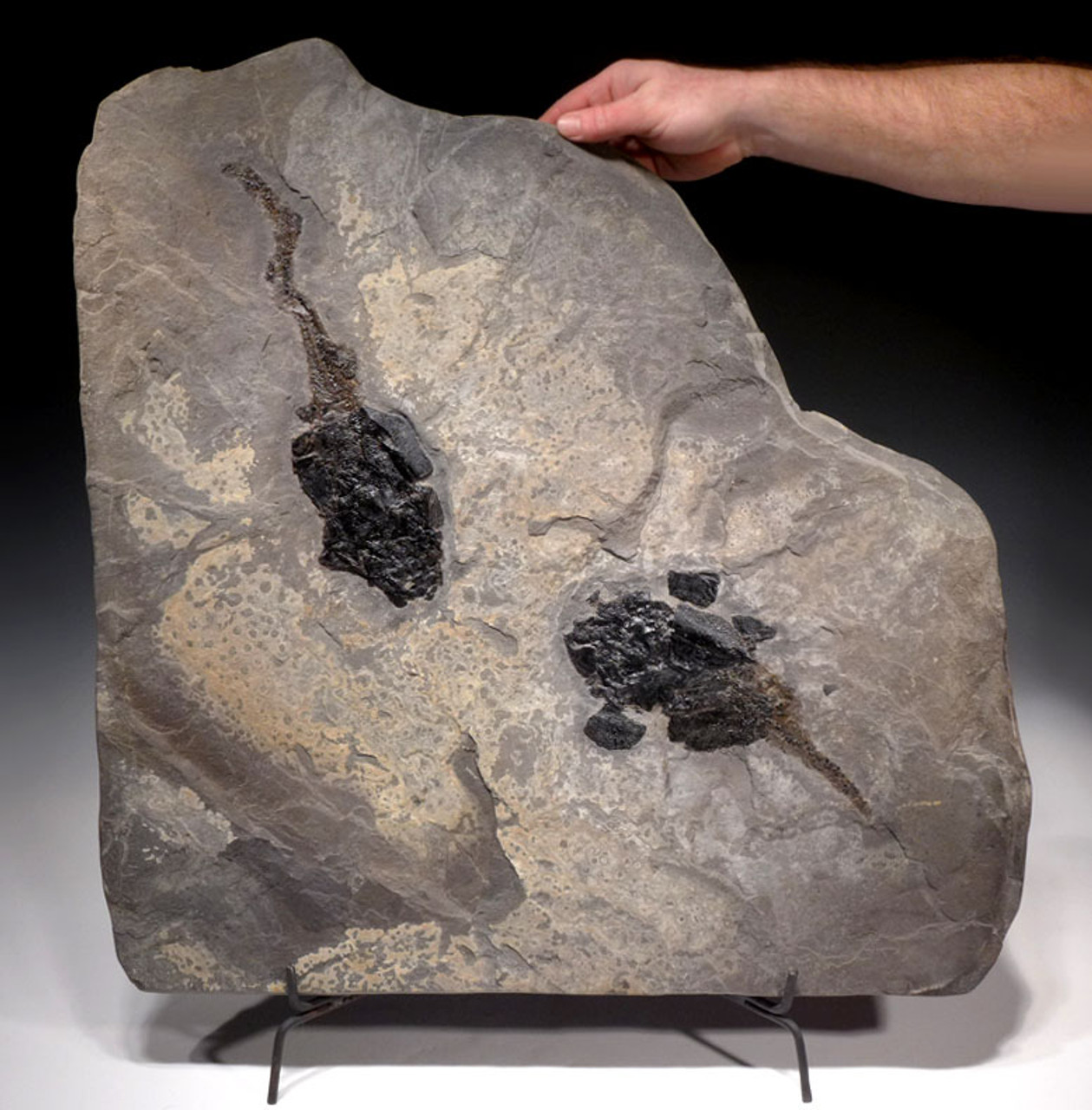Product Description
For the ultimate in a scientifically important, as well as a magnificently rare fish fossil, this is a large, supreme NATURAL DOUBLE Devonian fish fossil featuring TWO MAXIMUM SIZE armored fish fossils known as Coccosteus cuspidatus. The best fossil examples of these EARLIEST OF FISH, are typically found at about HALF the size of these incredible specimens. In most cases, only the armored head is found preserved. On this remarkable specimen, you have a massive unbroken original rock plate with two ENORMOUS specimens with FULL SKELETAL preservation and soft body impressions! Even if this a fossil with only one of these, it would be a MUSEUM-CLASS display piece but to have TWO and on a rock plate much larger than ever seen from this formation - this is truly fit for the finest museum exhibits!
The unusual armored-head fish of the species Coccosteus represents some of the Earth's earliest examples of fish and on this huge specimen, we see COMPLETE preservation of the body, not just the head as is typical. The rock slab is INTACT AND UNBROKEN with approximately a thickness of 1.5" - 2", overall. Color and contrast of the fossils is natural and very impressive when viewed in person. Down to the delicate 400 million year texture of the armor plates of the fish, this is just such an amazing specimen. While we have seen numerous Coccosteus fossils over the years, NOTHING has ever come close to being as nice as this, including all examples known in museums. Most are just a painted blob on a rock, possessing little detail and even less authenticity.
At a period in time when vertebrates were scarce on Earth and trilobites thrived in enormous varieties and numbers, these three fish of the Devonian graced a freshwater lake in the region that is now North Scotland. The Devonian Period is the first era on Earth of fish emerging in the fossil record and these three species are amongst those early fish species known.
The Old Red Sandstone layers of Northern Scotland are one of three of the world's most scientifically important and richest deposits yielding fossil fish from the Devonian. The other two sites are at Canowindra in New South Wales and Miguasha in Quebec. A wide variety of freshwater fish can be found in these layers in Scotland from a time when the very first four-limbed vertebrates were evolving. The Achanarras beds, named after the quarry where they were first discovered, can be found in the layers that were laid down in Lake Orcadie during the Devonian period, 380 million years ago. Achanarras Quarry is situated at the top of a hill and is not very large. Since the quarry is now closed, the main central portion is flooded and inaccessible. Many years ago, it was worked for the laminated limestone which was split for roofing slates. The deposits of this formation represent some of the world's finest preserved "first fish".
Many of these Devonian Scotland fish fossils are only partially present and the rest is recreated with black paint. When this is the case, you cannot see dramatic three dimensional scale detail like you see popping up off the rock on this specimen. Articulated across the body are jet black, intact scales still present in their unique diagonal pattern which is a classic trait for this fish. This specimen is rare not only for its stunning state of completeness and preservation, but for its size, as well. The limestone layers of North Scotland are amongst the world's most valuable and richest source for Devonian fish. The quarries consist of fossil-bearing layers of what have been known as the Old Red Sandstone Formation, studied since the early 19th century.

- ARTWORK COPYRIGHT BY N. TAMURA
 US DOLLAR
US DOLLAR
 EURO
EURO
 AUSTRALIAN DOLLAR
AUSTRALIAN DOLLAR
 CANADIAN DOLLAR
CANADIAN DOLLAR
 POUND STERLING
POUND STERLING


















